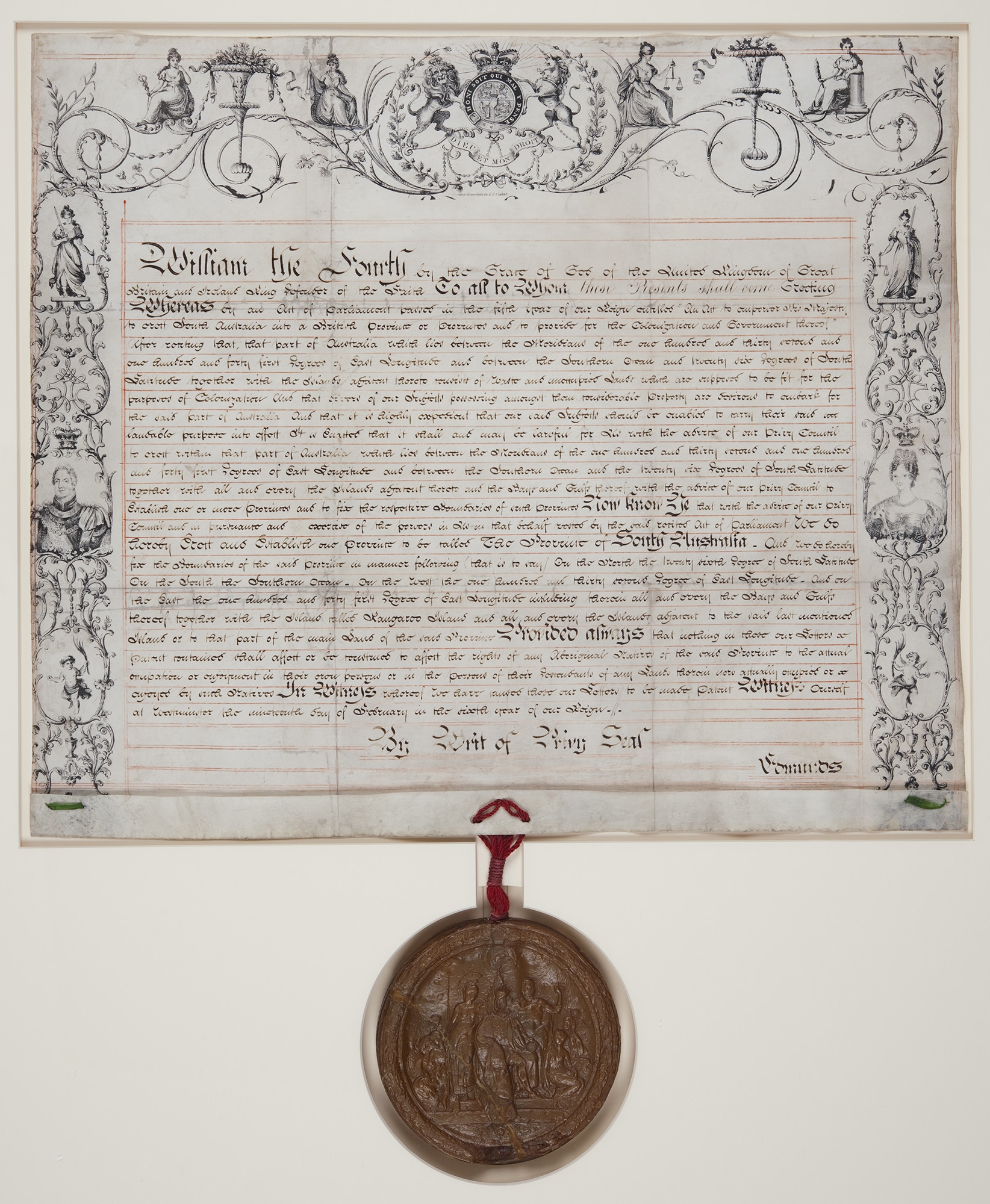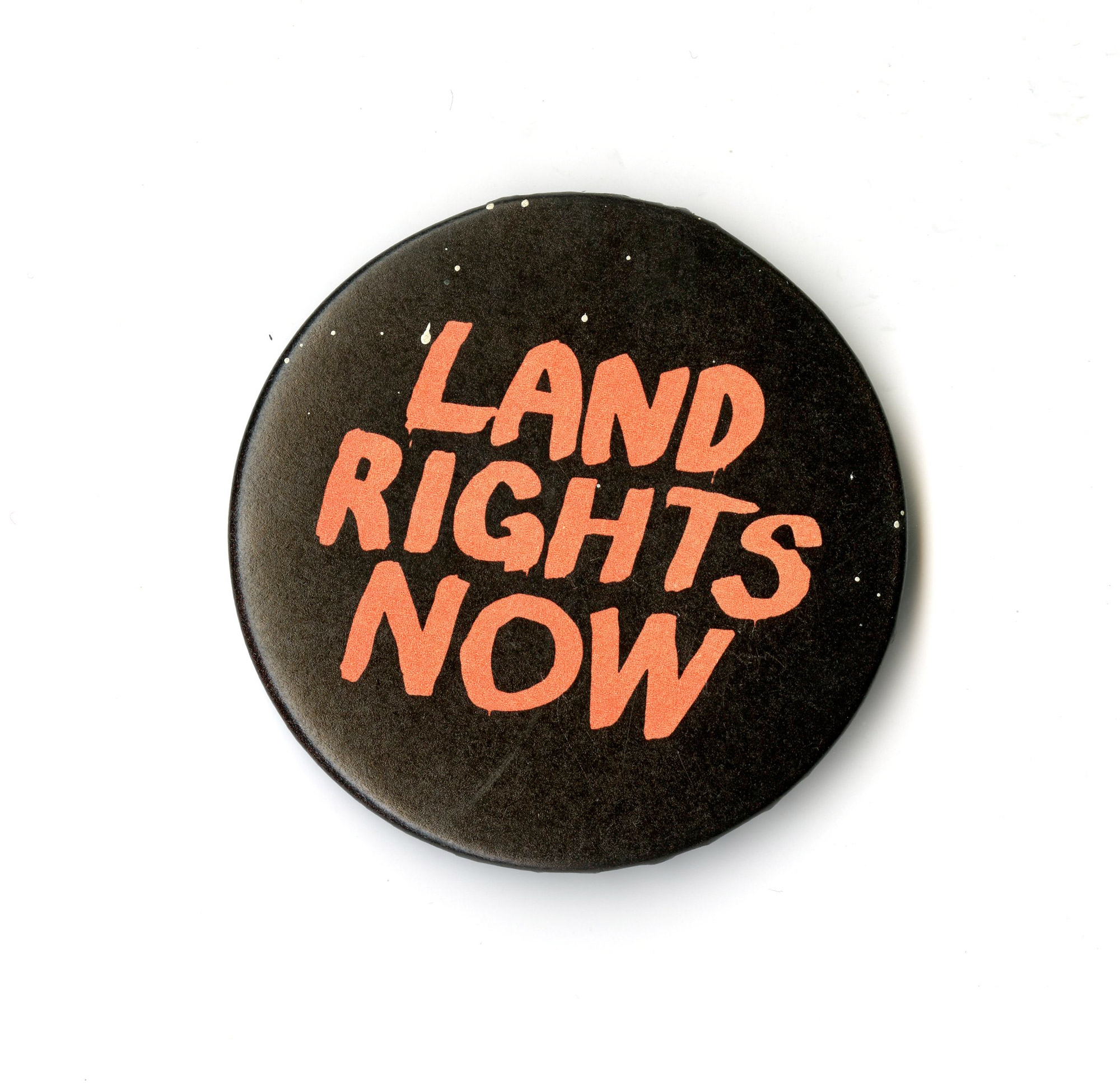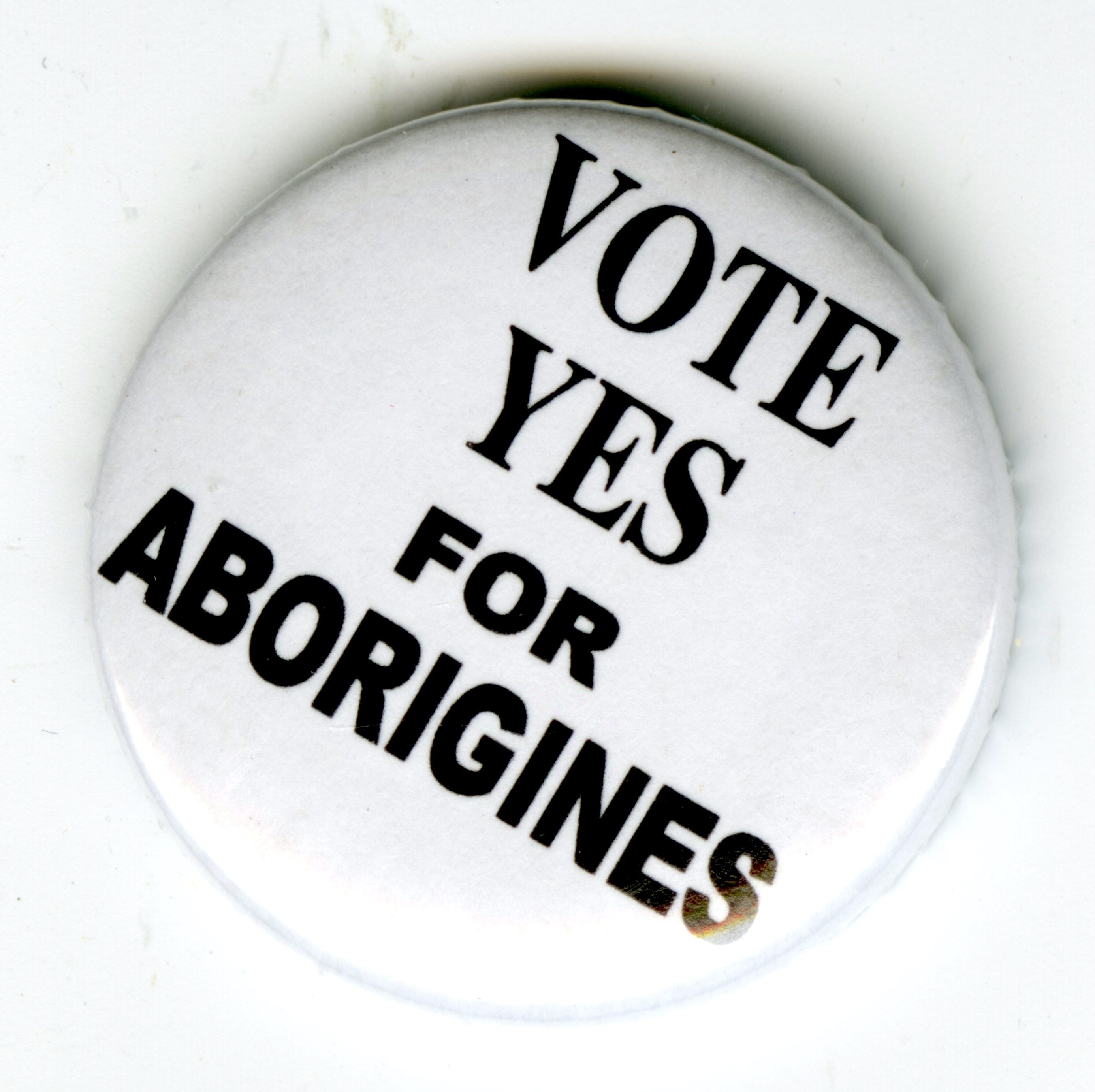Many significant campaigns and events have led the Australian government to propose the Voice to Parliament legislation in 2023. Here are some key moments in the development of state and federal legislation that help us to understand the context of the current debate.
South Australia
Why was South Australia chosen as the location for both the launch of the Federal Yes campaign, and the Prime Minister’s announcement of the referendum date? Partly this answer lies in the state’s history of the recognition of Indigenous rights.
South Australia’s history of the recognition of Indigenous rights is one of unfulfilled promises. A key founding document of the colony of South Australia is the Letters Patent, signed by King William IV in 1836. This document established the province of South Australia and set out the ideas behind systematic colonisation. The Letters Patent contained a clause which acknowledged that the Aboriginal people living in South Australia, as well as their descendants, had rights to the land which they occupied. This early acknowledgement of land rights had little impact once the British colonists arrived on South Australian soil. The meaning and legal significance of the Letters Patent continues to be discussed and debated today. You can view a short video synopsis of the Letters Patent on our YouTube Channel.

First Nations men were amongst all male British subjects granted the right to vote in 1856 when the colony was granted self-government. The same was true for First Nations women when female suffrage was granted in South Australia in 1894. Voting in these early elections, however, was more complicated than simply having the right to vote. In practice, many Indigenous people were not informed of their right to vote and were often discouraged from enrolling to vote or attending polling booths.
One hundred years later, shifts in political and public sentiment saw increased campaigning for Indigenous rights. In 1964, a group of First Nations women founded the Council of Aboriginal Women of South Australia, the first all-Aboriginal women’s committee in Australia. The Council worked to support Indigenous people with services such as education and skills development opportunities, legal advice, health care and welfare.[1]

Noted reformer Don Dunstan was a passionate campaigner for Indigenous rights. In his roles as Minister for Aboriginal Affairs and later as Premier of the South Australian Labor Party, he promoted a range of progressive legislation relating to First Nations peoples. In 1966 he sponsored the first anti-discrimination legislation in Australia.[2] The Prohibition of Discrimination Act 1966 (SA) prohibited race discrimination in providing food, drink, services or accommodation, terminating employment and controlling land. In December of that same year, South Australian Parliament passed the first land rights legislation in Australia. The Aboriginal Lands Trust Act 1966 established a Trust of First Nations peoples who could hold land in freehold which had previously been part of missions or Crown Reserves for Aboriginal communities. In 1976, while Premier, Dunstan appointed Australia’s only Indigenous Governor, Sir Doug Nicholls.[3]
Federal milestones
State campaigns and legislative change were all taking place within the wider national context. Formal calls for the federal recognition of First Nations people were begun by William Cooper, a Yorta Yorta man, in the mid-1930s. In 1933 and 1937 he presented Federal Parliament with a petition of 1,814 signatures from Indigenous peoples around Australia asking for Indigenous representation in Parliament. He called for it to be sent to King George VI.[4]

The 1960s were a time of extensive social and political change. The right to vote in federal elections was extended to all Aboriginal and Torres Strait Islander people in 1962. Five years later, the Yes vote in the 1967 referendum changed the Constitution to have Indigenous Australians counted in the census and for Federal Parliament to make laws regarding First Nations people.[5] Prior to this change, individual states had made separate laws regarding their First Nations peoples and no First Nations people had been counted in the statistical data collected for the census.
More changes to legislation concerning First Nations people continued throughout the 1980s and 1990s. In 1983 the Senate Standing Committee on Legal and Constitutional Affairs handed down its report titled Two Hundred Years Later… The report recommended the government consider a treaty with Aboriginal peoples.[6] The High Court decision on the Mabo case which recognised native title and overturned the myth of terra nullius was passed down in 1992, ten years after the case began.[7]
Two of the most well-known speeches given by Australian prime ministers were about the recognition of Indigenous rights: Paul Keating’s speech delivered in Redfern in December 1992 for the Australian launch of the International Year for the World’s Indigenous People;[8] and Kevin Rudd’s Apology to Australia’s Indigenous peoples, in particular the Stolen Generations, in 2008.[9]
Path to Constitutional Recognition: 2007-2023
Shortly before the 2007 election, then-Prime Minister John Howard announced that the government intended to hold a referendum to symbolically recognise First Nations peoples in a new preamble to the Constitution.[10] A similar commitment followed from Kevin Rudd. Given the bi-partisan commitment in the lead up to the election, an Expert Panel on Constitutional Recognition was established in 2010. Between 2010 and 2021 there have been five reports presented on Constitutional Recognition and what this might look like.[11]
Within this decade, from 2016-2017, the Referendum Council held a series of First Nations Regional Dialogues across Australia in order to ask First Nations people directly what recognition and constitutional reform means to them. The result of these dialogues was the Uluru Statement from the Heart presented to the Australian public on 26 May 2017. The Statement called for a First Nations Voice enshrined in the Constitution and the establishment of a Makarrata Commission.[12]
After he was elected in May 2022, Prime Minister Anthony Albanese committed to enacting the Uluru Statement from the Heart in full. His government’s proposal of the Voice to Parliament stems from this commitment and was informed by previous government reports and community discussions. Now, in the lead up to the referendum on 14 October 2023 it is up to you, as an active citizen, to learn more, ask questions and consider the options. Ultimately, the decision is yours.
[1] Lewis O’Brien & Professor Paul Hughes, ‘Gladys Elphick MBE’, SA History Hub, History Trust of South Australia, https://sahistoryhub.history.sa.gov.au/people/gladys-elphick-mbe.
[2] Don Dunstan Foundation, ‘Timeline’, https://www.dunstan.org.au/about/don-dunstan/.
[3] Ibid.
[4] Diane Barwick, ‘Cooper, William (1861–1941)’, Australian Dictionary of Biography, National Centre of Biography, Australian National University, https://adb.anu.edu.au/biography/cooper-william-5773/text9787, published first in hardcopy 1981.
[5] Uluru Statement from the Heart, ‘The Journey so Far’, https://ulurustatement.org/history/the-journey-so-far/.
[6] Ibid.
[7] Australian Institute of Aboriginal and Torres Strait Islander Studies, ‘The Mabo Case’, last updated 13 July 2023, https://aiatsis.gov.au/explore/mabo-case.
[8] Speech by the Hon Prime Minister, P J Keating MP, 10 December 1992, https://pmtranscripts.pmc.gov.au/sites/default/files/original/00008765.pdf.
[9] Speech by Hon Prime Minister Kevin Rudd MP, 13 February 2008, https://www.indigenous.gov.au/reconciliation/apology-australias-indigenous-peoples.
[10] Uluru Statement from the Heart, ‘The Journey so Far’, https://ulurustatement.org/history/the-journey-so-far/.
[11] Australian Government, ‘History of constitutional recognition and the Aboriginal and Torres Strait Islander Voice’, https://voice.gov.au/about-voice/history-constitutional-recognition-and-aboriginal-and-torres-strait-islander-voice.
[12] Referendum Council, ‘Media Release’, 26 May 2017, https://www.referendumcouncil.org.au/sites/default/files/2017-05/Referendum_Council_Media%20Release_Uluru_Statement_from_the_Heart_3.pdf.





